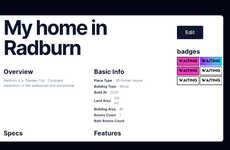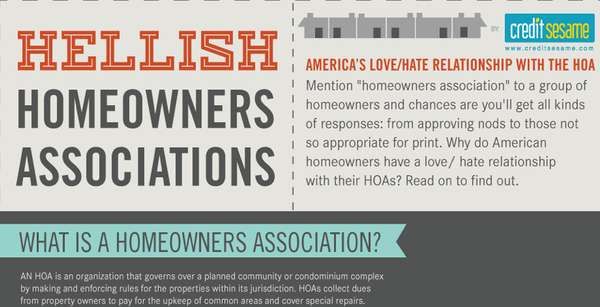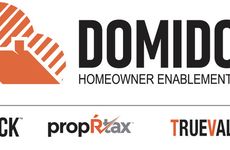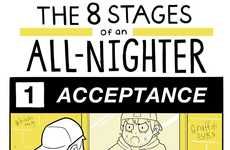
The 'American Homeowners' Love/Hate Relationship with the HOA' Graph
Neil Spencer — November 20, 2011 — Lifestyle
References: creditsesame
The 'American Homeowners' Love/Hate Relationship with the HOA' graph is revealing.
The relationship with this association for many homeowners is not always the best. Especially when you live in a town home or condo. If you live in one, then you are more than familiar with the catch 22 situation. Your lawn isn't always your lawn, or your neighbors lawn — or anyone's lawn if it happens to connect with the street. Who's going to take care of the maintenance? While many would like to believe in an alternate universe, where neighbors in a condominium community would spend their Saturday afternoons mowing the lawn, raking leaves, and tending to the communal Peter Rabbit garden together, the reality is there isn't a chance of that ever occurring outside the movie set of 'Pleasantville.'
While Homeowners Associations (HOAs) provide benefits to their communities: build community with potlucks, maintain certain amenities, common areas, and pool/hot tub ensembles from disrepair, there are many things they do to stifle living conditions. These strict rules and increasing fees (they never go down) are enough to make anyone blow a fuse. Why do American homeowners have a love/hate relationship with their HOAs? Read the 'American Homeowners' Love/Hate Relationship with the HOA' infographic to see the money it costs them, and the ridiculous rules and regulations they have to abide by.
The relationship with this association for many homeowners is not always the best. Especially when you live in a town home or condo. If you live in one, then you are more than familiar with the catch 22 situation. Your lawn isn't always your lawn, or your neighbors lawn — or anyone's lawn if it happens to connect with the street. Who's going to take care of the maintenance? While many would like to believe in an alternate universe, where neighbors in a condominium community would spend their Saturday afternoons mowing the lawn, raking leaves, and tending to the communal Peter Rabbit garden together, the reality is there isn't a chance of that ever occurring outside the movie set of 'Pleasantville.'
While Homeowners Associations (HOAs) provide benefits to their communities: build community with potlucks, maintain certain amenities, common areas, and pool/hot tub ensembles from disrepair, there are many things they do to stifle living conditions. These strict rules and increasing fees (they never go down) are enough to make anyone blow a fuse. Why do American homeowners have a love/hate relationship with their HOAs? Read the 'American Homeowners' Love/Hate Relationship with the HOA' infographic to see the money it costs them, and the ridiculous rules and regulations they have to abide by.
Trend Themes
1. HOA Backlash - The backlash against restrictive and costly HOAs presents an opportunity to disrupt the residential property industry by offering alternative, flexible homeownership models.
2. Community-based Maintenance - In response to HOA discontent, there is a trend towards organizing community volunteers to maintain shared areas, presenting opportunities for disrupters to offer tools and technologies that facilitate and incentivize community involvement and coordination.
3. Empowered Homeowners - Empowering individual homeowners with more say in the decision-making processes of the HOA will create a feeling of ownership and responsibility, and there is an opportunity to disrupt the industry by offering tools and platforms that enable homeowners to elect the right representatives and provide transparency into HOA dealings.
Industry Implications
1. Real Estate - The disruptive opportunity lies in creating new models of homeownership beyond the constraints of HOAs that offer more freedom and control over maintenance and property management.
2. Community-based Tools - There is an opportunity for the disruption of community-based organizing tools, such as digital platforms for managing volunteers and coordinating maintenance among neighbors.
3. Democratic Tools - Disruptive innovation opportunities exist in tools for democratizing decision-making processes, in the form of digital platforms that improve transparency and help to elect representatives who are representative of homeowners.
0.9
Score
Popularity
Activity
Freshness























